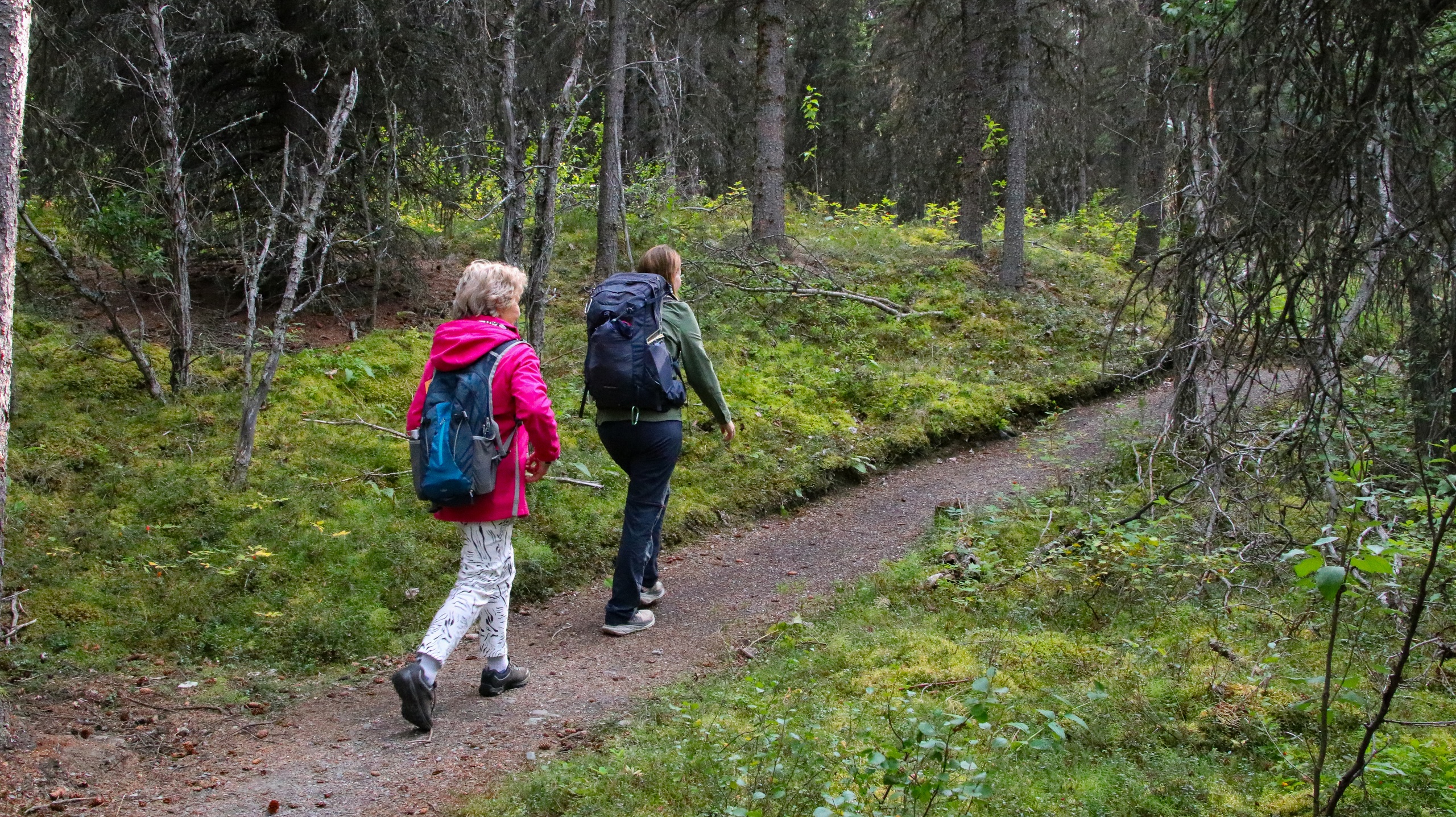Hiking Blue Mountains National Park: Sandstone Stairs, Forested Gorges, and Big-Sky Lookouts
A practical, story-driven guide to Australia’s most accessible wilderness from Katoomba’s iconic escarpments.
Dawn arrives like a quiet wager on the edge of the escarpment. At Echo Point, the Three Sisters stand watch—three sandstone sentinels holding their ground as mist lifts from the Jamison Valley. The air carries eucalyptus on its breath. Cockatoos dispute the morning. The valley exhales a blue haze, the park’s namesake rising and folding over ridgelines that look infinite. Stand here long enough and the landscape starts talking. The cliffs dare you to commit. The stairs wink: come and earn it.
Trail Wisdom
Start early for space and light
Beat tour bus crowds at Echo Point and Wentworth Falls by stepping onto the track before 8am; you’ll also score the cleanest light for photos.
Respect the stairs
Many classic routes (Giant Stairway, Furber Steps, National Pass) involve steep, exposed staircases—wear grippy footwear and pace your descent to save energy for the climb out.
Carry real water and backup nav
Creek water isn’t reliably safe; bring 2 liters per person and download offline maps (or carry a paper topo) as reception fades in gullies.
Weather shifts fast
Fog, wind, and sudden showers can move in—pack a light shell even on bluebird days and keep an eye on cliff edges in gusts.
Local Knowledge
Hidden Gems
- •Sublime Point Lookout in Leura for a quieter, jaw-dropping angle on the Jamison Valley
- •Pulpit Rock Lookout near Blackheath, a narrow promontory that feels like flying
Wildlife
Superb lyrebird, Swamp wallaby
Conservation Note
This UNESCO-listed landscape protects rare hanging swamps and sandstone ecosystems—stay on formed tracks, pack out all waste, and avoid trampling fragile cliff-edge vegetation.
The National Pass and Grand Canyon Walk were hand-cut in the early 1900s, part of an ambitious era of track-building that opened the escarpments to walkers.
Seasonal Guide
spring
Best for: Waterfall volume, Wildflower blooms, Mild temperatures
Challenges: Changeable weather, Track closures after storms
September–November brings cool mornings, comfortable hiking temps, and lively creeks. Expect some closures if heavy rain hits.
summer
Best for: Long daylight hours, Canyon shade, Early or late hikes
Challenges: Heat on exposed clifftops, Higher bushfire risk, Crowds at key lookouts
December–February can be hot; start at dawn, favor gully and canyon routes, and check NSW Parks fire danger before you go.
fall
Best for: Stable weather, Crisp visibility, Foliage in villages
Challenges: Shortening days, Cooler valley temps
March–May is prime: clear air, pleasant days, and reliable conditions for classic loops like the Grand Canyon Walk.
winter
Best for: Crowd-free lookouts, Golden low-angle light, Brisk, clear days
Challenges: Cold starts, Icy patches on shaded steps, Short daylight
June–August is quiet and beautiful—pack warm layers and a headlamp, and take care on damp, shaded staircases.
Photographer's Notes
What to Bring
Trail shoes with aggressive treadEssential
Sandstone steps and damp overhangs get slick—good traction keeps you upright.
Lightweight rain shellEssential
Showers roll across the escarpment quickly; a shell keeps you moving comfortably.
2L hydration systemEssential
Creek water isn’t reliably drinkable and heat builds on clifftops—bring your own supply.
Offline map app or paper topo
Signal fades in gullies; having a backup prevents wrong turns on longer loops.
Common Questions
How do I get to Blue Mountains National Park from Sydney without a car?
Take the Blue Mountains Line train from Sydney Central to Katoomba (about 2 hours). From Katoomba Station, local buses or the hop-on/hop-off Explorer Bus connect to Echo Point, Leura, and many trailheads.
Are there entry or parking fees?
Most areas of the park are free to enter, though vehicle fees apply at Glenbrook and some council-managed car parks (like Echo Point) charge for parking. Check signage and NSW Parks for current rates.
What’s the best short hike for first-timers?
The Prince Henry Cliff Walk between Echo Point and Katoomba Falls offers big views on a mostly gentle track. Allow 1–2 hours with photo stops.
Is swimming allowed in the park?
Yes, in some natural pools, but conditions vary and water is cold year-round. Jellybean Pool in the Glenbrook area is popular in summer—avoid swimming after heavy rain or in fast-moving creeks.
Are the trails suitable for kids?
Many lookouts and shorter sections of the Prince Henry Cliff Walk are family-friendly. Steep stair routes like the Giant Stairway or National Pass are better for experienced, sure-footed kids and teens.
Do I need a guide for canyoning or longer hikes?
Not for marked day-walks if you’re experienced, but canyoning is technical—consider licensed guides and always check Blue Mountains NP canyon access alerts and conditions.
What to Pack
Grippy trail shoes for slick sandstone; 2L of water per person since creeks aren’t reliably drinkable; a light rain shell and warm layer because weather flips quickly; offline maps or a paper topo in case cell service drops in gullies.
Did You Know
The Greater Blue Mountains Area was inscribed as a UNESCO World Heritage site in 2000 and shelters the Wollemi pine, a ‘dinosaur tree’ thought extinct until its rediscovery in 1994.
Quick Travel Tips
Catch the early train from Sydney (before 7am) to beat crowds; Use Katoomba as your base for easy access to Echo Point and Scenic World; Check NSW National Parks alerts for track closures after storms; Bring cash/card for council parking meters at popular lookouts.
Local Flavor
Post-hike, refuel at Leura Garage for wood-fired pizzas and local produce, then celebrate at Mountain Culture Beer Co in Katoomba—Australia’s award-winning craft brewery with a mountain-town vibe. If you have a rest day, visit the Blue Mountains Cultural Centre for exhibitions and a rooftop view over the Jamison.
Logistics Snapshot
Closest airport: Sydney (SYD). Train: Blue Mountains Line to Katoomba (~2 hours). Driving: ~1.5–2 hours from Sydney CBD to Katoomba; 5–15 minutes to major lookouts. Cell service: Generally good on escarpments, patchy or nonexistent in valleys. Permits: No permit for standard day hikes; vehicle fees at Glenbrook and some paid council parking; canyoning and group activities may require registration—check NSW Parks.
Sustainability Note
This UNESCO-listed park relies on visitor care: stay on formed tracks, don’t feed wildlife, and skip cliff-edge shortcuts that erode fragile sandstone. Pack out everything, including food scraps, and respect culturally significant sites.
Continue Reading

Canyon Wave: Rafting Denali’s Glacial Heart on the Nenana River
The Nenana River doesn’t whisper—it urges you forward. On the Canyon Wave run, you’ll punch through crisp, glacial rapids beneath Denali’s ramparts, trading roadside views for a front-row seat to Alaska’s wild hydraulics. Cold water, big smiles, and a canyon that knows how to keep pace.
Healy, Alaska

Chasing Light in Denali: An Afternoon Hike Across Taiga and Tundra
Trade the tour bus for tundra. This guided afternoon hike threads from shadowed spruce to open ridgeline, where Denali’s valleys breathe wide and the wind calls the cadence. Come for the views, stay for the stories beneath your boots.
Denali Park, Alaska

